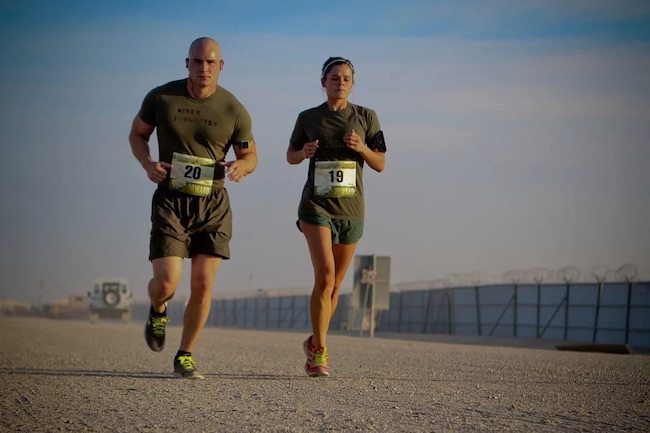Move it, shake it: Increasing physical activity is linked to longevity regardless of intensity by: Zoey Sky for Natural News
The thought of daily grueling gym sessions may put people off of exercising regularly, but a recent review has revealed that even light exercise offers health benefits. Details of the study were published in the journal BMJ.
The article bears good news, especially for people who spend hours at their desks at work and those who are too busy to commit to regular intense workouts.
For the review, the researchers studied data from published reports in which wearable trackers were used to measure the physical activity of middle-aged and elderly participants.
The review corroborated earlier findings that suggested links between three factors: Physical activity, sedentary behavior and longevity.
While a lot of existing health guidelines concerning minimum levels of exercise were based on studies that used self-reported levels of activity, the BMJ review is the first to use data from research that measured physical activity with devices like accelerometers.
Accelerometers are wearable movement sensors that track the amount and intensity of activity during a user’s waking hours.
Light activities and the importance of exercise
Current guidelines advise against spending too much time sitting, but they don’t indicate how much sitting is harmful to your health. This inspired the researchers to determine the effects of sedentary behavior.
In an accompanying opinion article, Ulf Ekelund and Thomas Yates, two of the review authors, explained that determining whether light activity has less impact on health and longevity — especially for adults in their middle years and older — than moderate and vigorous activity is important in order to understand how best to educate the public on the importance of exercise.
Ekelund is a professor at the Norwegian School of Sport Sciences and the Norwegian Institute of Public Health. Yates is a professor of physical activity, sedentary behavior and health at the University of Leicester in the United Kingdom.
Fitness, sedentary behavior and risk of death
For their review, Ekelund and his team examined data on 36,383 adults. The participants had a minimum age of 40 and an average age of 62.
The researchers gathered data from eight different studies that tracked physical activity using motion sensors for at least one week. These studies then monitored the participants after the one-week tracking period for an average of 5.8 years.
The different studies categorized physical activity as light, moderate or vigorous and estimated the amount of time spent in a day doing each activity.
- Light physical activity included cooking, washing dishes or walking. (Related: Fads come and go but traditional exercise remains: Experts recommend an hour walking, swimming, or cycling, even if you’re doing high intensity strength training.)
- Moderate activity included mowing grass, vacuuming and brisk walking.
- Intense physical activity included digging, carrying heavy weights and jogging.
The researchers then arranged the results into quarters, from the 25 percent most active to the 25 percent least active volunteers. Out of all the volunteers, 5.9 percent, or 2,149 people, died during the follow-up.
Using these deaths, the researchers determined each participant’s risk of death in relation to his physical activity level.
Any level of activity helps reduce death risk
After adjusting for factors that could influence the results, they researchers found that any level of activity, whether light, moderate or vigorous, helped reduce the risk of death during the follow-up period.
The scientists also found that:
- At least 25 percent of the most active participants had a 60 to 70 percent lower risk of death than 25 percent of the least active volunteers. There were also five times more deaths in the least active group than in the most active group.
- With the exemption of time spent sleeping, sitting for 9.5 hours a day or more contributed to “a statistically significant raised risk of death.”
These findings suggest that any level of physical activity, even light exercise for those who don’t have time or aren’t in the condition to do vigorous activities, is crucial for overall health and longevity.
Suggested exercises for overall health
The activities below range from light, moderate to vigorous. Try some of them and exercise more to increase your life expectancy.
Light physical activity
The following light exercises will help you stay healthy without stressing your joints too much:
Moderate physical activity
Moderate activities make your heart beat faster than light activities. These activities can also make you breathe harder than usual, but you’ll still be able to talk as you exert a moderate amount of effort.
- Biking slower than 10 miles per hour
- Brisk walking (at least 2.5 miles per hour)
- Tennis (Doubles)
- Water aerobics
Intense physical activity
Intense physical activities require more effort than moderate activities. Doing these activities can make you feel warm and make you sweat. You may also find it harder to talk to someone without running out of breath. Examples of intense activities you can try include:
- Cycling 10 miles per hour or faster
- Hiking uphill
- Jumping rope
- Running
- Swimming laps
- Tennis (Singles)
If you want to live longer, spend less time sitting on your couch and set aside several minutes each day to exercise and try different activities. Doing this will help you maintain a healthy weight and make your body stronger.




